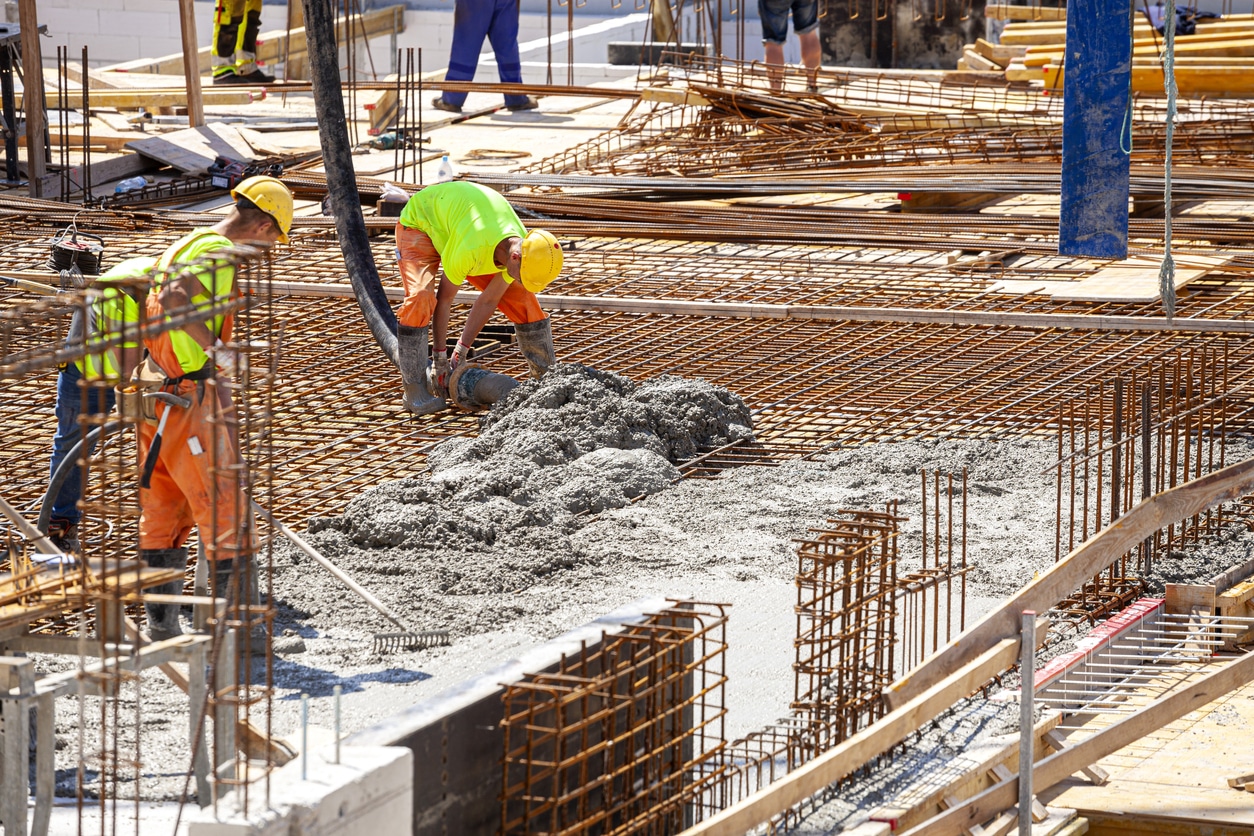Truck parking lots for commercial use must accommodate heavy loads and larger vehicles. Additionally, mixed-use…

How Hard Is it to Lay Concrete?
You might believe that laying concrete is a relatively simple DIY project. If your parking lot or driveway begins showing signs of water damage, such as holes or a pitted-out appearance, you might think that you can head over to your local home improvement store, pick up a bag of concrete, and patch up these holes in about an hour or so. Unfortunately, this is simply not the case.
Your DIY concrete project might suffice for a short time, but eventually, the patchwork will start to break up. Once your repair job degrades, it will most likely leave you with the very same problems that prompted you to undertake the job in the first place, or your concrete will be in worse condition than it was before.
Laying concrete is not as easy as you might think. It can lead to problems further down the road if done incorrectly. Here are several reasons why laying concrete is difficult and why you should leave concrete jobs to professionals.
7 Reasons Why Pouring Concrete Is Difficult
- You need to understand the differences between the types of concrete
- You need to know precisely how much concrete the job requires
- You must have the correct tools to lay concrete
- You have to mix the correct concrete-to-water ratios
- You need to build concrete forms
- You may need steel reinforcements
- You need to achieve the proper texture
You Need to Understand the Differences Between the Types of Concrete
There are several types of concrete, and each one accomplishes a specific task. Choosing the correct concrete for a job can be very difficult if you are inexperienced. If you use the wrong kind of concrete, the results can be disastrous. Here are a few of the several types of concrete that your job may require.
- Modern Concrete Modern concrete is a mix of Portland cement, an aggregate, and water. Modern concrete is everywhere.
- High-Strength Concrete High-strength concrete withstands compressive strength of over 6,000 psi (pounds per square inch).
- High-Performance Concrete High-performance concrete is sturdy but lacks compression strength.
- Ultra High-Performance Concrete This concrete contains various ingredients. Although it can crack or suffer from water damage after it sets, it still maintains some structural strength.
- Stamped Concrete Stamped concrete uses stamps to achieve a natural stone look and add artistic design elements. Laying stamped concrete is an arduous process that, when done correctly, produces impressive results.
- Self-Consolidating Concrete. Self-consolidating concrete does not require manual consolidation.
Even if you think you understand the different types of concrete, some types break down into subcategories. For instance, there are five primary types of Portland cement, making things even more confusing for the uninitiated.
You Need to Know Exactly How Much Concrete the Job Requires
Concrete is a three-dimensional substance that requires precise measurements. Inexperienced people often have a tough time determining how much concrete they need to complete a particular project. If you lay concrete too thin, it will crack and won’t sustain weight. Concrete also dries quickly, so you need to ensure that you have enough available and mixed to complete the project.
You Must Have the Right Tools to Lay Concrete
Successful concrete pouring requires precise tools. If you do not use the correct tools, then the final results will end up subpar. Additionally, concrete laying tools are expensive. The costs of the concrete and the tools you need are comparable to hiring a professional concrete company to get the job done correctly.
You Have to Mix the Correct Concrete-to-Water Ratios
Mixing the correct ratio of concrete and water is tricky. If the concrete is too thin, it will crack, and it might not set up correctly if it is too thick. Even if you follow the directions on the bag, there is no guarantee that it will work out the way you need it to because of varying environmental factors and conditions.
You Need to Build Concrete Forms
Concrete requires forms to hold it in place until it solidifies. You have to build these forms yourself, which is no easy task. Everything needs to be level and square to create an acceptable finished product. You must also treat the support frames for successful removal once the concrete hardens.
You May Need Steel Reinforcements
Many concrete projects require steel reinforcements to work successfully. Laying steel reinforcements correctly can be difficult for the typical homeowner.
You Need to Achieve the Correct Texture
Even if you manage to prepare the site, build your forms, and lay your concrete, you must consider the texture of the concrete. A walkway cannot be too slippery, or else it poses a safety risk. Creating the ideal consistency is a skill that takes tradespeople many years to master.
Always Consult a Concrete Professional
If your concrete suffers from water damage, cracking, or some other imperfection, you should call a concrete professional to repair the problem. Whenever you want concrete laid, it is best to hire a concrete company than attempt the task yourself.
Laying concrete is time-consuming and complicated. It is a challenging project that far exceeds the capabilities of the everyday DIYer. K&E Flatwork is Kansas City’s first choice for commercial and residential concrete repair and projects. Reach out to us if you have a concrete project or your concrete needs repairs!




This Post Has 0 Comments